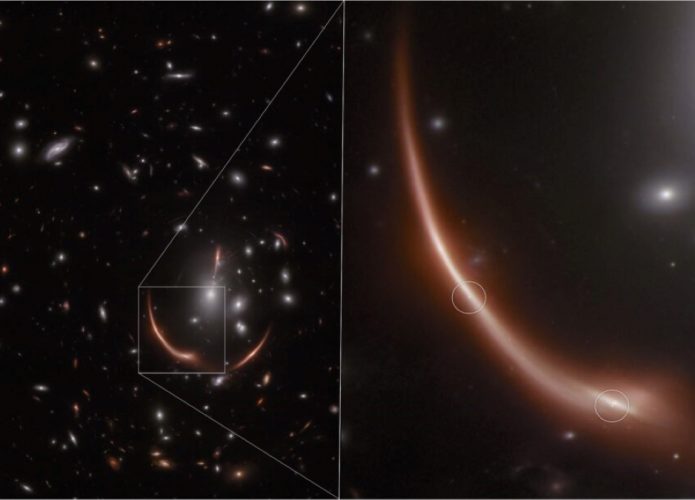The James Webb Space Telescope has identified a new supernova in a galaxy already known to astronomers. This discovery will help astronomers in their study of the Hubble constant, a basic calculation for measuring the expansion rate of the universe.
As the site explains space, the capture was possible thanks to gravitational lensing, an optical effect predicted by Albert Einstein in which the curvature of space-time and the three dimensions of space and time are combined into one, resulting in distorted (magnified or distorted) vision. Distant space light.
{{#values}} {{#ap}}
{{/ap}} {{^ap}}
{{/ap}} {{/values}}
Read more:
In 2016, the Hubble Space Telescope captured an image of the galaxy MRG-M0138. But after three years of analysis, it was discovered that it contained distortions of five images separated by gravitational lensing of the galaxy cluster MACS J0138.0-2155, 4 billion light-years from Earth.
Examining the images, scientists noticed light from a bright star explosion, or supernova, inside MRG-M0138 (images below). The heavenly body was named Mass.
However, in recent analyses, NASA astronomers have discovered that the same galaxy has a new supernova, now discovered thanks to James Webb. Scientists have named the new starburst Encore.

The discovery of supernovas could help solve one of the biggest unknowns in astronomy: the Hubble Constant. Supernovae like these belong to the “Ia” category (explosions from a dwarf star) and are particularly useful for measuring cosmic distances, say astronomers at NASA Justin Birrell and Andrew Newman:
By measuring differences in the times when images of supernovas appear, we can measure the history of the expansion rate of the universe, known as the Hubble constant, which represents a major challenge in cosmology today.
NASA's Justin Birrell and Andrew Newman.
According to astronomers, when a supernova explosion occurs, its light reaches Earth through several different paths, and these paths represent different lengths. In this way, a supernova can appear in images separated by days, weeks, and even years.
By measuring differences in the times when images of supernovas appear, we can measure the history of the expansion rate of the universe, known as the Hubble constant, which represents a major challenge in cosmology today.
NASA's Justin Birrell and Andrew Newman.
The researchers expect a new image of these supernovae to form in 2035, providing a new measurement of the Hubble constant.
Are you curious about how the measurement that calculates the size of the universe works? Hey Digital look He published an article explaining the history and how to calculate the Hubble constant.

“Hardcore beer fanatic. Falls down a lot. Professional coffee fan. Music ninja.”


/https://i.s3.glbimg.com/v1/AUTH_bc8228b6673f488aa253bbcb03c80ec5/internal_photos/bs/2023/9/a/w2K73yQyAfqZirt0LjRg/2023-12-30t143836z-1703048150-up1ejcu14oa7u-rtrmadp-3-soccer-england-lut-che-report.jpg)




More Stories
What is the ideal running time to lose belly fat?
With science and dialogue, Otinga State Park celebrates 31 years
Money Dose: The Science Behind the ‘No’ That Doesn’t Come Out Why is Saying No So Hard?